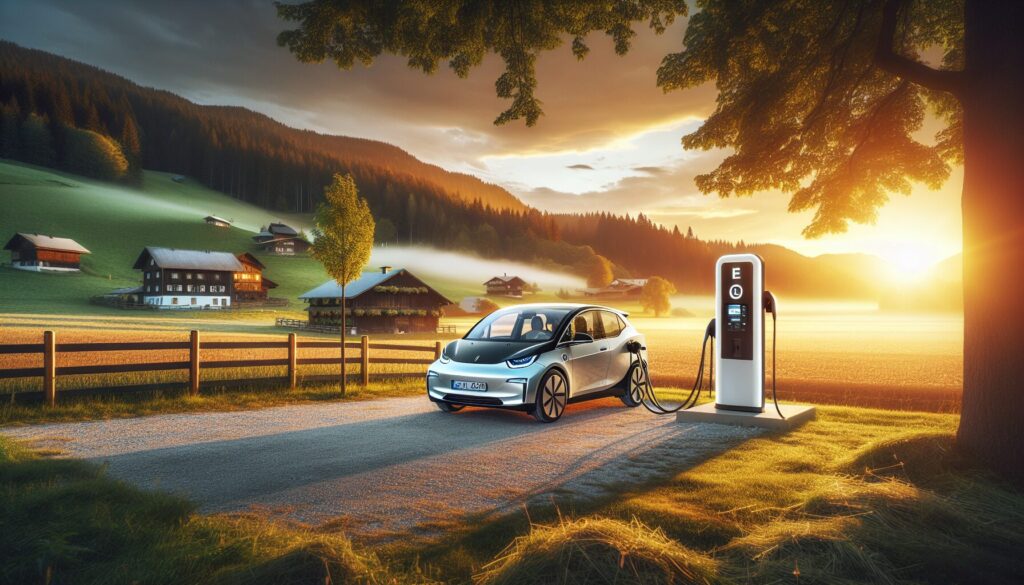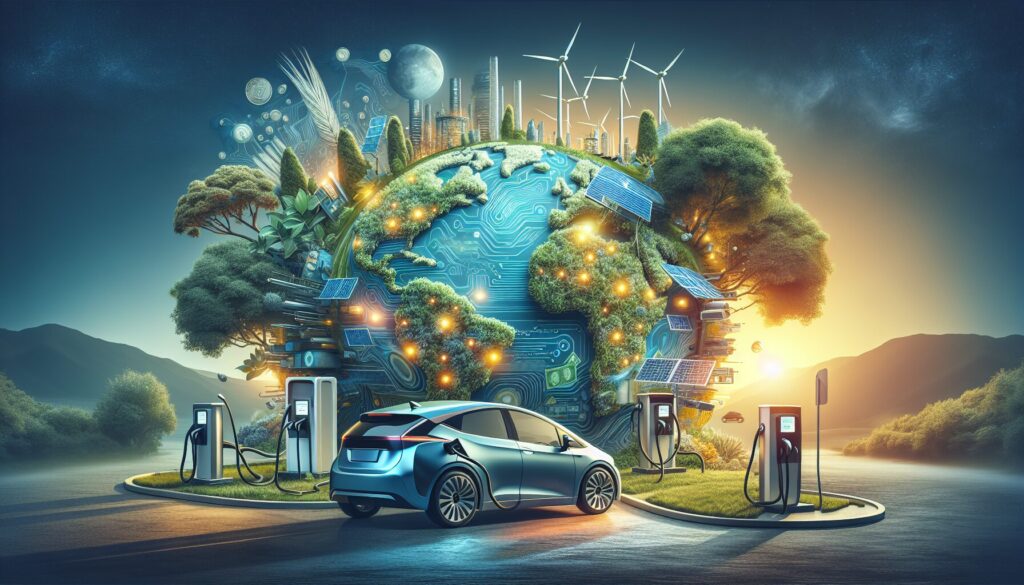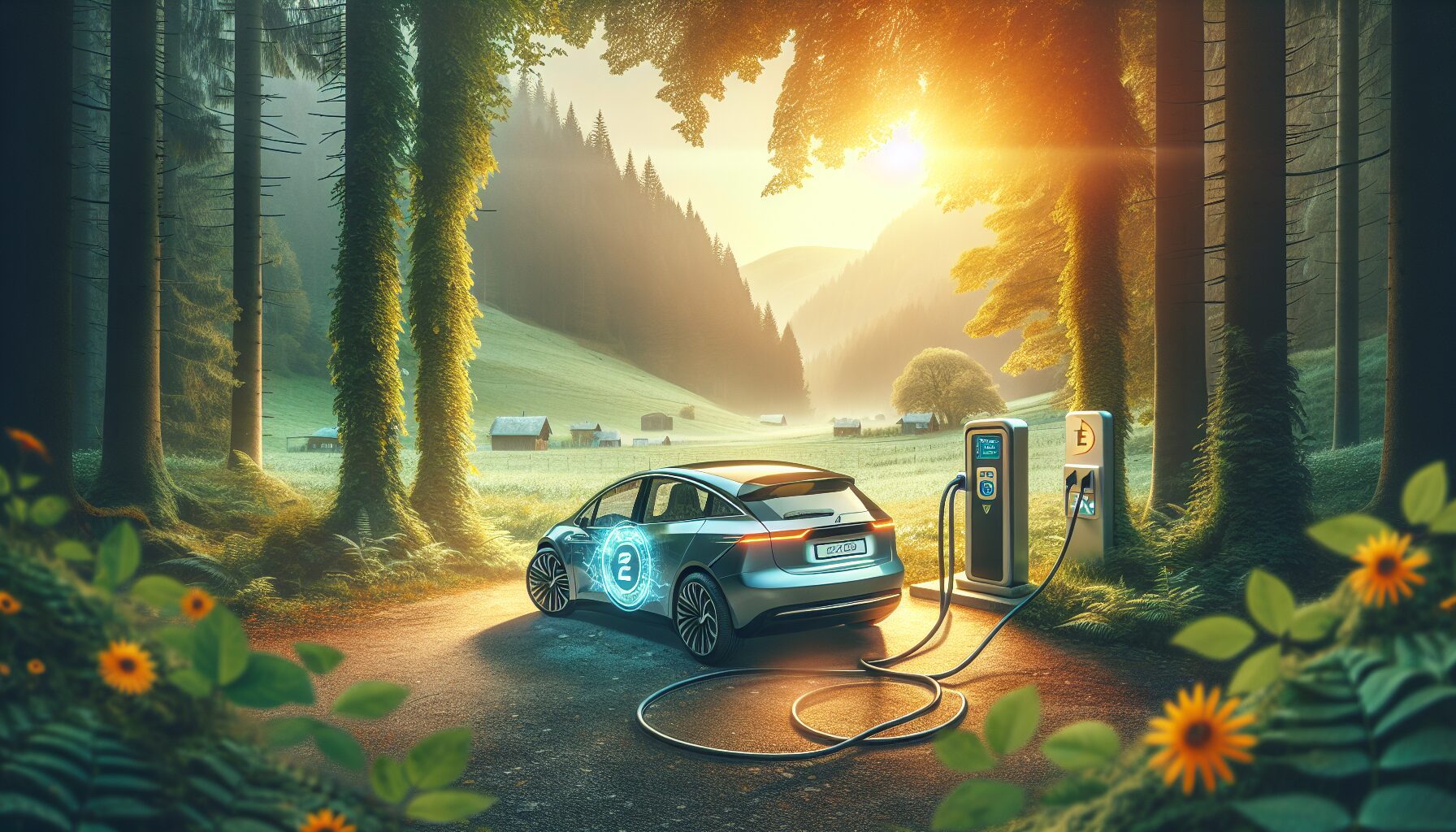Imagine cruising down the open roads of Australia in your electric vehicle (EV), feeling the sun on your face and the wind in your hair. But, wait—what about charging? That’s where understanding electric vehicle charging infrastructure becomes crucial. It all started for me on a road trip when I stumbled upon a DC fast charging station. These stations can charge your EV up to 80% in just 30 minutes! They use sophisticated load balancing algorithms to manage electricity demand efficiently. In rural areas, integrating grid-tied renewable energy systems can be a game-changer. Australian Renewable Energy Agency is doing amazing work in this field. The idea is to balance the energy grid while supporting the uptake of EVs. Additionally, organizations like Electric Vehicle Council are pivotal in developing these infrastructures. With these advancements, the future of EV charging in rural Australia looks bright and sustainable.
Current Challenges in Rural EV Infrastructure
Living in the beautiful expanse of rural Australia has its perks, but when it comes to electric vehicle charging infrastructure, there are definitely some challenges. I remember a road trip I took across the outback last year. I had my electric vehicle (EV) all ready and charged up, but as I ventured further into the countryside, I quickly realized how sparse the charging options were. It’s not just about the number of stations; it’s about the technology behind them too.
One of the major hurdles is ensuring that the existing electrical grid can handle the demand. In rural areas, the grid isn’t always equipped for high power draw from DC fast charging stations. This is where load balancing algorithms come into play. They help distribute the electrical load more evenly across the network. However, implementing these solutions in remote areas can be tricky due to limited infrastructure.
Technological and Logistical Challenges
Moreover, the adoption of bi-directional Vehicle-to-Grid (V2G) technology is still in its infancy in many rural areas. This technology allows EVs to not just draw power but also feed it back to the grid. It’s a game-changer for renewable energy integration, particularly in areas with abundant sunlight, like rural Australia. Yet, the initial setup costs and technological know-how required can be significant barriers.
Furthermore, the distance between charging stations in rural areas is a practical concern. Unlike urban centers where stations are only a few kilometers apart, rural drivers might need to travel substantial distances to find their next charge. This can lead to range anxiety, a common deterrent for potential EV owners. The Electric Vehicle Council has been working hard to address these gaps, but there’s still a long way to go.
Lastly, there’s the challenge of awareness and education. Many rural residents are yet to be fully informed about the benefits of switching to EVs. It’s not just about reducing emissions; it’s about embracing a future where energy is cleaner and more sustainable. The Australian Renewable Energy Agency is playing a crucial role in spreading this message, but change takes time.
Benefits of Developing Charging Stations in Rural Areas

Living in Australia, I’ve had the pleasure of driving through our breathtaking rural landscapes. Imagine cruising along, knowing you’re contributing to a sustainable future with every kilometer. That’s where the magic of expanding electric vehicle infrastructure in rural areas comes in. Let me tell you, the benefits are more than just convenience for EV drivers!
Firstly, developing charging stations in rural regions is a boon for local economies. These stations attract visitors, encouraging them to spend more time—and money—in small towns. I once stopped in a quaint town in Victoria for a quick charge. While waiting, I discovered a delightful café that used locally-sourced ingredients. These charging stops can transform into opportunities for local businesses to shine.
Environmental and Technological Benefits
Another major perk is the environmental impact. By supporting renewable energy sources, rural charging stations can significantly reduce carbon emissions. I’ve seen firsthand how integrating V2G technology can stabilize local power grids. It’s fascinating! This tech allows stored energy in EVs to be fed back into the grid, balancing supply and demand. Not only does this support grid reliability, but it also contributes to a cleaner environment.
Moreover, these developments bring technological advancements to rural areas. Implementing load balancing algorithms ensures efficient distribution of power, preventing grid overloads. This tech-savvy approach helps rural communities embrace the future of energy. Plus, with Level 3 DC fast chargers, charging times are drastically reduced, making EVs even more practical for long-distance travel.
There’s also the social aspect. Having accessible charging infrastructure empowers rural residents to adopt electric vehicles. This not only reduces their carbon footprint but also decreases dependence on fossil fuels. As more people switch to EVs, demand for petrol decreases, potentially lowering fuel costs for everyone.
The Electric Vehicle Council supports these initiatives, highlighting their importance in achieving sustainability goals. Furthermore, the Australian Renewable Energy Agency plays a pivotal role in funding these projects, ensuring they’re both efficient and effective.
Incorporating electric vehicle charging infrastructure in rural areas isn’t just about convenience. It’s a step towards a sustainable future, enhancing local economies, and embracing cutting-edge technology. According to Reuters, expanding EV infrastructure is crucial for meeting global climate targets. Isn’t it exciting to be part of this incredible journey towards a greener Australia?
Key Considerations for Infrastructure Planning

Planning electric vehicle charging infrastructure in rural Australia is like preparing for a camping trip—it’s all about knowing your terrain and resources! Back in the day, I had a project in outback Queensland, and boy, did I learn a lot about power distribution and logistics. We had to consider three-phase power distribution, which is crucial for ensuring enough juice for those Level 2 EV chargers scattered around.
Now, let’s dive into the essentials. First off, understanding local energy requirements is paramount. Rural areas often have limited grid capacity, so you’re dealing with a unique set of challenges. It’s essential to assess the existing grid infrastructure to determine if it can support new charging stations. This is where three-phase power comes into play. It helps distribute electricity efficiently, which is a lifesaver when you’re setting up multiple chargers in remote areas.
Engaging Community and Stakeholders
Another key consideration is engaging with the local community. I remember a project near the Grampians where local input was invaluable. Residents knew the best locations for chargers and helped us liaise with local councils. Building these relationships ensures the infrastructure meets the community’s needs and gains their support.
Of course, you can’t overlook Vehicle-to-Grid (V2G) technology. This innovative approach can provide a backup power supply during peak times, balancing the load and reducing strain on the grid. It’s like having a power bank built into your car! When planning, consider integrating V2G to enhance grid stability, especially in areas with inconsistent power supply.
Moreover, accessibility and convenience are crucial for driver satisfaction. Chargers should be placed at strategic locations, such as rest stops, cafes, or tourist attractions. This not only encourages EV use but also boosts local businesses. In one project, we set up a charging station at a popular roadhouse, and the owner was thrilled with the increased foot traffic!
Finally, securing funding and support from organizations like the Australian Renewable Energy Agency and the Electric Vehicle Council can accelerate your project. These entities can provide financial assistance and technical expertise, making the setup process smoother.
Case Studies of Successful Rural Charging Networks

Let me tell you about a recent road trip I took through the scenic backroads of Australia. The journey took me through some of the most breathtaking rural areas, where I got to witness firsthand the impact of well-placed electric vehicle charging stations. One standout example was a DC fast charging station powered by grid-tied solar arrays. It was nestled in a small town with a population just shy of a thousand. This wasn’t just any charging station; it was a hub of innovation, thanks to its advanced load management systems that ensured efficient energy use.
Another remarkable case is the collaboration between local communities and the Australian Renewable Energy Agency. In one project, several towns came together to build a network of Level 3 DC fast chargers along a popular rural route. The chargers were strategically placed near local attractions, encouraging travelers to explore the area while their vehicles charged. This initiative not only provided much-needed charging infrastructure but also boosted local tourism and economic growth. The chargers made use of three-phase power distribution, which significantly reduced charging times and increased reliability.
Community-Driven Success
In another inspiring example, a small agricultural region decided to embrace electric vehicle technology. They partnered with the Electric Vehicle Council to install several DC fast charging stations. These stations were equipped with cutting-edge Vehicle-to-Grid (V2G) technology, allowing farmers to balance their energy loads more efficiently. This setup not only supported the farmers’ energy needs but also contributed to the stability of the local power grid during peak usage times.
The key to these successful rural charging networks lies in community involvement. Local governments, businesses, and residents worked hand in hand, ensuring that the infrastructure was designed to meet their unique needs. Additionally, the use of local renewable energy sources, such as solar and wind, provided a sustainable energy supply for the charging stations.
These case studies highlight the potential of electric vehicle charging infrastructure to transform rural areas. They showcase the importance of strategic planning and community collaboration. With the right mix of technology and local support, rural regions can become pioneers in the electric vehicle revolution.
Technological Innovations in Charging Solutions
Let’s dive into the world of technological innovations that are transforming the landscape of electric vehicle charging in rural Australia. I remember the first time I encountered a Level 2 EV charging station. It was a game-changer. The station had a phase-controlled rectifier, which made it super efficient in converting AC to DC. This was crucial for the fast charging capabilities we crave, especially when on those long, scenic drives through the Outback.
Nowadays, smart grid integration is becoming the norm. It’s fascinating how the grid can communicate with charging stations to optimize energy use. This is particularly important in rural areas where energy resources might be limited or variable. Implementing smart grid solutions ensures that the electricity supply remains stable, even when multiple vehicles are charging simultaneously. The integration also allows for dynamic load management, which helps in balancing the energy distribution across different charging stations.
Advanced Charging Technologies
One of the most exciting advancements is the development of wireless charging solutions. Imagine just parking your car over a charging pad and letting the magic happen! This technology uses electromagnetic fields to transfer energy between two coils: one in the charging pad and the other in the vehicle. It’s still in the development phase for widespread use, but the potential for convenience, especially in rural settings, is immense.
Additionally, the concept of Vehicle-to-Grid (V2G) is another innovative approach. It allows electric vehicles to discharge power back into the grid. This is particularly useful in rural areas where energy storage solutions are needed. V2G technology can turn these vehicles into mobile energy sources, providing an extra layer of energy security.
Moreover, there’s been significant progress in the development of more robust load balancing algorithms. These algorithms ensure that the demand on the grid is evenly distributed, preventing overloads and blackouts. They’re crucial for maintaining a reliable energy supply, especially when dealing with three-phase power distribution in remote areas.
Innovation doesn’t stop there. Organizations like the Australian Renewable Energy Agency and the Electric Vehicle Council are constantly researching and funding projects to improve EV infrastructure. These efforts are paving the way for a more sustainable and efficient future in electric vehicle charging solutions. As someone who’s passionate about both technology and sustainability, it’s thrilling to see how these innovations are reshaping the way we think about energy and transportation.
Conclusion
Ultimately, the expansion of electric vehicle charging infrastructure in rural Australia presents a promising path toward a more sustainable future, intertwining technological innovation with community growth. By overcoming logistical and technological challenges, rural areas can transform into hubs of renewable energy and eco-friendly travel. As local economies thrive and environmental impact diminishes, the vision of a greener Australia becomes ever more achievable. Here’s to a bright and sustainable journey ahead!
Continue Exploring
Ready to supercharge your electric vehicle experience? Discover the cutting-edge thermal management solutions perfect for the UK climate and ensure your EV runs smoothly and efficiently.


Leave a Reply